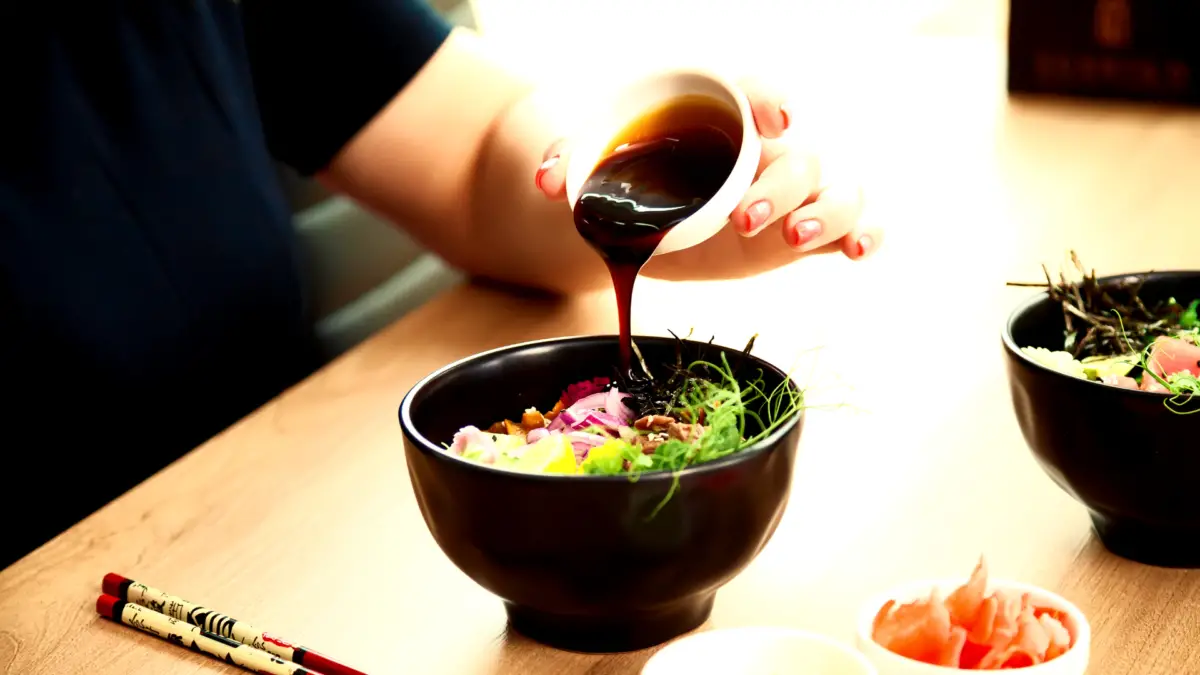Tangy Tamari Soy Sauce Dressing | Easy 5-Min Recipe
I’m sure you’re tired of the same old salad dressing recipes. I know I am!
There are so many out there that it is almost impossible to try them all.
If you like umami Asian-inspired dressing, tamari dressing is a light yet, flavorful alternative to the classics like Caesar and balsamic, and ranch.
But this versatile dressing uses tamari soy sauce, which gives it a tangy kick and a slightly different flavor than traditional dressings.


Check out our new cookbook
Bitemybun's family recipes with complete meal planner and recipe guide.
Try it out for free with Kindle Unlimited:
Read for freeIn this post we'll cover:
Make tamari soy sauce dressing at home
It’s oh-so-simple to make, and it combines the best Japanese flavors, so you can be sure it tastes umami.
If you want something with a kick, here’s the recipe for tangy tamari dressing in under 5 minutes!
Also read: What is tamari Japanese shoyu? Here’s how to use this soy sauce

Tangy tamari soy sauce dressing recipe
Ingredients
- 1 cup olive oil
- 1 cup nutritional yeast
- ⅔ cup tamari
- ½ cup cider vinegar
- ½ cup lemon juice
- 2 tbsp garlic powder
- 1 tbsp chopped fresh basil
- 1 tbsp chopped fresh oregano
- 1 tbsp chopped fresh thyme
Instructions
- Blend all ingredients in a food processor or blender until smooth.
- Serve over salads or enjoy as a dipping sauce.
Cooking tips
If you’re looking for a tasty, healthier tamari, try the San-J organic tamari.
The nutritional yeast and garlic powder in this dressing give it an extra zing of flavor without adding any harshness.
If you want, you can add less yeast and a bit of water to make the dressing runnier.
You can use fresh minced garlic in place of the garlic powder for a more intense flavor.
If you don’t have fresh herbs on hand, you can substitute dried herbs.
I recommend using a blender because you end up with a very smooth dressing. But you can use a whisk to combine the ingredients.
Substitutes and variations
You can experiment with other herbs and spices or try adding different oils like sesame or walnut to give your dressing a unique twist.
Nutritional yeast has many health benefits, so be sure to add it to your diet whenever you can!
But if you don’t like its salty taste, you can simply omit it or replace it with something like fresh herbs or dried spices.
You can also add some furikake seasoning to give your dressing an extra umami taste.
And if you’re looking for a more creamy, fattier dressing, try adding some tahini or mayonnaise to the mix.
If you want to make this dressing even tangier, try adding a splash of rice vinegar or white vinegar.
Wondering about mayonnaise in Japan? Here is how their famous Kewpie mayonnaise compares to Western mayonnaise
How to serve and eat
This dressing is fantastic on greens, grains, or potato salads. It’s delicious on its own, and it also serves as a fantastic dipping sauce.
Tamari dressing goes great with hearty salads like kale, spinach, and quinoa. It’s also perfect for dipping veggies or even as a marinade for tofu or other protein.
You can also use this dressing on classic greek salads, tomato, and cucumber salads, or drizzle it over roasted veggies to add some extra flavor.
Japanese spinach salad is traditionally made with a gomaae sesame dressing, but you can try the salad with this tamari one instead!
It tastes tangy and refreshing. Also, use this dressing for sunomono Japanese cucumber salad!
You can even use it instead of vinaigrette on sandwiches or wraps or as a marinade for meats and tofu.
So get creative and enjoy this delicious twist on classic tamari soy sauce dressing!
This dressing is a great option for those who want to try something new. It has a light, clean flavor and is filled with protein, making it perfect for vegetarians.
How to store leftovers
Store leftover dressing in an airtight container in the fridge for up to 5 days. I recommend storing it in a glass jar.
You can also freeze it for later use if you want to save some for later. Just be sure to thaw it in the fridge before using. Enjoy!
Similar dishes
There are a few similar dressings and sauces.
For example, miso ginger dressing, creamy miso sauce, and Asian vinaigrette all use Japanese flavors and are delicious alternatives to tamari dressing.
There’s a similar tamari dressing with tahini paste which can be used in many ways, including as a sushi dip.
If you want a more traditional tamari dressing, try swapping the nutritional yeast with soy sauce and adding sesame oil.
Tamari soy sauce is actually an important component of many sauces, dips, and dressings.
Actually, most dressings and sauces that call for soy sauce can be adapted, and you can use tamari instead.
Conclusion
Next time you’re having a salad, don’t settle for the same old dressing. Try this tangy, umami tamari soy sauce dressing instead!
It’s easy to make and perfect for all your favorite salads and veggies. Its flavor is rich and complex, with a hint of spice that really brings out the best in your meals.
So what are you waiting for? Give this delicious tamari dressing recipe a try today!
Also check out this light & delicious Kanikama Crab Salad recipe
Check out our new cookbook
Bitemybun's family recipes with complete meal planner and recipe guide.
Try it out for free with Kindle Unlimited:
Read for freeJoost Nusselder, the founder of Bite My Bun is a content marketer, dad and loves trying out new food with Japanese food at the heart of his passion, and together with his team he's been creating in-depth blog articles since 2016 to help loyal readers with recipes and cooking tips.

